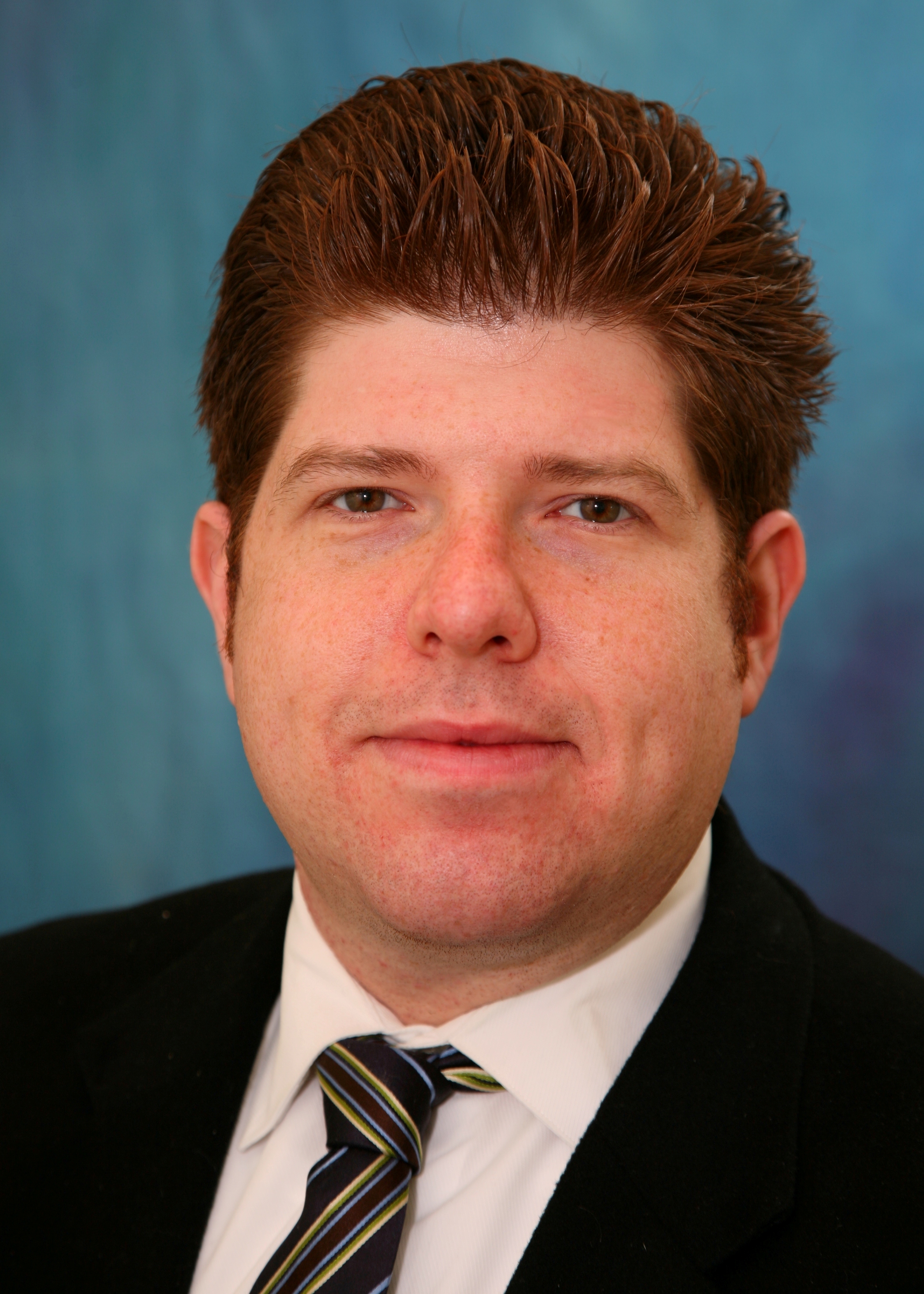Here are five achievable goals for spine practice operational success.
1. Analyze costs for savings opportunities. Understand where the big cost centers are for spine care so you can locate opportunities for cost reduction. Spine surgeons should be part of this process because if they don't know what the procedure costs, they can't find areas for savings.
 "The first step in cost cutting is measurement and the second step is breaking down the entire costs for the procedure from A to Z," says Bryan Oh, a neurosurgeon who focuses on spine surgery at BASIC Spine in Orange, Calif. "Once you have a sense of that you can see the opportunities for cost improvement. I think that's really important because if you don't even know where the big cost centers are, you will be taking a stab in the dark."
"The first step in cost cutting is measurement and the second step is breaking down the entire costs for the procedure from A to Z," says Bryan Oh, a neurosurgeon who focuses on spine surgery at BASIC Spine in Orange, Calif. "Once you have a sense of that you can see the opportunities for cost improvement. I think that's really important because if you don't even know where the big cost centers are, you will be taking a stab in the dark."
The biggest costs associated with spine surgery are often implants, medications and 30-day readmission rates. Collect the DRT data for each spine center surgeon and discuss the variance.
"They have to engage the surgeons to see how much the procedures cost," says Dr. Oh. "Once the surgeon has a handle on the data, start lowering that rate. Demonstrate you can lower the rate and present that data to insurance companies, which will really make you a preferred provider."
2. Renegotiate instrument and implant costs. Instrumentation and implants are likely the biggest cost center for a single case and there are plenty of opportunities to knock those prices down. First consider whether you need a brand new microscope or the latest implant generation; if not, you can save by continuing to use your original microscope or purchasing commoditized implants for wholesale prices.
"The first thing to realize about cost savings is that sacrifices are going to have to be made in terms of the instrumentation, haemostatic agents and other products that are our favorites," says Brian R. Gantwerker, MD, of The Craniospinal Center of Los Angeles. "We'll have to part with them or renegotiate our prices. In order to maintain quality of care at a reduced cost, we ourselves will also need to do our own cost cutting."
 Streamlining the implants so everyone in the group uses the same devices will give you more power to form an exclusive agreement and negotiate prices down for individual implants. More hospitals now are partnering with surgeons to help them during vendor contract negotiations.
Streamlining the implants so everyone in the group uses the same devices will give you more power to form an exclusive agreement and negotiate prices down for individual implants. More hospitals now are partnering with surgeons to help them during vendor contract negotiations.
"If we are going to do a fusion, pedicle screw case or especially biologics, surgeons have to very aggressively be involved in contract and price negotiations for the product," says Dr. Gantwerker. "I was working with a hospital in Southern California and did negotiations for their microscope and operating room table, and I was able to work down the price by working with two different companies. As a surgeon, you have clout because you are bringing these devices into the operating room. Some surgeons are reticent of getting into the dirt, but for cost effectiveness it's important."
Dr. Gantwerker recommends surgeons first determine a price based on what their budget allows and then ask for 10 percent to 20 percent below that price initially. As each side negotiates to the middle, surgeons should be able to hit their target price. However, they should also be willing to walk away if necessary. "You have to picture it like buying a new car and be willing to leave," says Dr. Gantwerker. "Ninety percent of the time they will be back with a better price; however being willing to cut your losses in case they do not is extremely important."
3. Embark on online and social media marketing efforts. If your practice is looking for ways to connect with current and potential customers to increase retention, word-of-mouth referrals and gain new patients, social media is an inexpensive, direct way to do so. However, the world of social media is new, vast and can be overwhelming, so it is crucial to develop a plan before embarking on social media outreach. Identifying your target audience, finding out what social media platforms they are using and strategically entering into their conversations through applications and advertising is the best approach. It's also critical to budget time within your workweek to manage the content and allow the project several months to grow. Assign an office manager or hire an outside marketing agency to assist in the planning and implementation of social media strategy.
 4. Bridge the gap between surgeons and hospital executives for a productive relationship. Hospital executives and independent spine surgeons have traditionally been on opposite sides of the spectrum when it comes to managing the spine hospital service line. However, more surgeons and hospitals are taking advantage of the opportunity to come together around a mutually beneficial goal — providing great patient care — while also sharing in savings and revenue generation.
4. Bridge the gap between surgeons and hospital executives for a productive relationship. Hospital executives and independent spine surgeons have traditionally been on opposite sides of the spectrum when it comes to managing the spine hospital service line. However, more surgeons and hospitals are taking advantage of the opportunity to come together around a mutually beneficial goal — providing great patient care — while also sharing in savings and revenue generation.
"We have to recognize that one of the primary motivators for both hospitals and surgeons is revenue," says Scott Gibbs, MD, founder of Brain and NeuroSpine Clinic of Missouri and director of the Southeast Missouri Hospital's Brain and Spine Center, both in Cape Girardeau. "I think revenue opportunities are very important and we have to inspire others to work toward a mutually common goal. Surgeons need to take the lead with hospitals and craft a vision that is mutually beneficial for the hospital and the surgeon."
These partnerships could come in the form of co-management arrangement of spine service lines, collaboration to construct a comprehensive spine "center of excellence" or a joint venture surgery center, among other arrangements. "The surgeons and the hospitals have to create a vision that is big enough to include both parties," he says. The future may bring additional challenges and opportunities for surgeons and hospitals to partner and share revenue gains, especially in accountable care organizations.
"What we need to do is create a comprehensive bundling of surgical procedures, postoperative care and pain management so there is one price for everything," says Dr. Gibbs. "Then we will have to negotiate with hospitals for our fee. The hospital has to understand that they must participate in developing the best treatment plan for their patients. Surgeons need to organize that for the hospitals because hospital executives don't practice spine surgery, so they sometimes under appreciate its nuances. We need to craft that vision for them and have the leadership to deliver it."
 5. Reward staff members for efficiency. Since efficiency is absolutely key for spine practices to maintain a healthy revenue cycle, reward members of your staff who are the most efficient. This can include employees who are taking care of patients well and making sure all of their responsibilities are completed each day.
5. Reward staff members for efficiency. Since efficiency is absolutely key for spine practices to maintain a healthy revenue cycle, reward members of your staff who are the most efficient. This can include employees who are taking care of patients well and making sure all of their responsibilities are completed each day.
"We try to reward the people who are most efficient," says Terrence Crowder, MD, a spine surgeon with Sonoran Spine Center in Mesa, Arizr. "We perform routine audits of patient charts and survey patient satisfaction, which is a factor in whether people receive a raise or bonus. We are constantly evaluating our staff to make sure they are doing a good job of taking care of patients and keeping them happy."
More Articles on Spine Surgeons:
24 Spine Surgeons Discuss Most Exciting Trends for the Future
5 Observations on Spine Surgery Heading to Outpatient Procedures
6 Top Advocacy Issues for North American Spine Society
1. Analyze costs for savings opportunities. Understand where the big cost centers are for spine care so you can locate opportunities for cost reduction. Spine surgeons should be part of this process because if they don't know what the procedure costs, they can't find areas for savings.
 "The first step in cost cutting is measurement and the second step is breaking down the entire costs for the procedure from A to Z," says Bryan Oh, a neurosurgeon who focuses on spine surgery at BASIC Spine in Orange, Calif. "Once you have a sense of that you can see the opportunities for cost improvement. I think that's really important because if you don't even know where the big cost centers are, you will be taking a stab in the dark."
"The first step in cost cutting is measurement and the second step is breaking down the entire costs for the procedure from A to Z," says Bryan Oh, a neurosurgeon who focuses on spine surgery at BASIC Spine in Orange, Calif. "Once you have a sense of that you can see the opportunities for cost improvement. I think that's really important because if you don't even know where the big cost centers are, you will be taking a stab in the dark."The biggest costs associated with spine surgery are often implants, medications and 30-day readmission rates. Collect the DRT data for each spine center surgeon and discuss the variance.
"They have to engage the surgeons to see how much the procedures cost," says Dr. Oh. "Once the surgeon has a handle on the data, start lowering that rate. Demonstrate you can lower the rate and present that data to insurance companies, which will really make you a preferred provider."
2. Renegotiate instrument and implant costs. Instrumentation and implants are likely the biggest cost center for a single case and there are plenty of opportunities to knock those prices down. First consider whether you need a brand new microscope or the latest implant generation; if not, you can save by continuing to use your original microscope or purchasing commoditized implants for wholesale prices.
"The first thing to realize about cost savings is that sacrifices are going to have to be made in terms of the instrumentation, haemostatic agents and other products that are our favorites," says Brian R. Gantwerker, MD, of The Craniospinal Center of Los Angeles. "We'll have to part with them or renegotiate our prices. In order to maintain quality of care at a reduced cost, we ourselves will also need to do our own cost cutting."
 Streamlining the implants so everyone in the group uses the same devices will give you more power to form an exclusive agreement and negotiate prices down for individual implants. More hospitals now are partnering with surgeons to help them during vendor contract negotiations.
Streamlining the implants so everyone in the group uses the same devices will give you more power to form an exclusive agreement and negotiate prices down for individual implants. More hospitals now are partnering with surgeons to help them during vendor contract negotiations."If we are going to do a fusion, pedicle screw case or especially biologics, surgeons have to very aggressively be involved in contract and price negotiations for the product," says Dr. Gantwerker. "I was working with a hospital in Southern California and did negotiations for their microscope and operating room table, and I was able to work down the price by working with two different companies. As a surgeon, you have clout because you are bringing these devices into the operating room. Some surgeons are reticent of getting into the dirt, but for cost effectiveness it's important."
Dr. Gantwerker recommends surgeons first determine a price based on what their budget allows and then ask for 10 percent to 20 percent below that price initially. As each side negotiates to the middle, surgeons should be able to hit their target price. However, they should also be willing to walk away if necessary. "You have to picture it like buying a new car and be willing to leave," says Dr. Gantwerker. "Ninety percent of the time they will be back with a better price; however being willing to cut your losses in case they do not is extremely important."
3. Embark on online and social media marketing efforts. If your practice is looking for ways to connect with current and potential customers to increase retention, word-of-mouth referrals and gain new patients, social media is an inexpensive, direct way to do so. However, the world of social media is new, vast and can be overwhelming, so it is crucial to develop a plan before embarking on social media outreach. Identifying your target audience, finding out what social media platforms they are using and strategically entering into their conversations through applications and advertising is the best approach. It's also critical to budget time within your workweek to manage the content and allow the project several months to grow. Assign an office manager or hire an outside marketing agency to assist in the planning and implementation of social media strategy.
 4. Bridge the gap between surgeons and hospital executives for a productive relationship. Hospital executives and independent spine surgeons have traditionally been on opposite sides of the spectrum when it comes to managing the spine hospital service line. However, more surgeons and hospitals are taking advantage of the opportunity to come together around a mutually beneficial goal — providing great patient care — while also sharing in savings and revenue generation.
4. Bridge the gap between surgeons and hospital executives for a productive relationship. Hospital executives and independent spine surgeons have traditionally been on opposite sides of the spectrum when it comes to managing the spine hospital service line. However, more surgeons and hospitals are taking advantage of the opportunity to come together around a mutually beneficial goal — providing great patient care — while also sharing in savings and revenue generation."We have to recognize that one of the primary motivators for both hospitals and surgeons is revenue," says Scott Gibbs, MD, founder of Brain and NeuroSpine Clinic of Missouri and director of the Southeast Missouri Hospital's Brain and Spine Center, both in Cape Girardeau. "I think revenue opportunities are very important and we have to inspire others to work toward a mutually common goal. Surgeons need to take the lead with hospitals and craft a vision that is mutually beneficial for the hospital and the surgeon."
These partnerships could come in the form of co-management arrangement of spine service lines, collaboration to construct a comprehensive spine "center of excellence" or a joint venture surgery center, among other arrangements. "The surgeons and the hospitals have to create a vision that is big enough to include both parties," he says. The future may bring additional challenges and opportunities for surgeons and hospitals to partner and share revenue gains, especially in accountable care organizations.
"What we need to do is create a comprehensive bundling of surgical procedures, postoperative care and pain management so there is one price for everything," says Dr. Gibbs. "Then we will have to negotiate with hospitals for our fee. The hospital has to understand that they must participate in developing the best treatment plan for their patients. Surgeons need to organize that for the hospitals because hospital executives don't practice spine surgery, so they sometimes under appreciate its nuances. We need to craft that vision for them and have the leadership to deliver it."
 5. Reward staff members for efficiency. Since efficiency is absolutely key for spine practices to maintain a healthy revenue cycle, reward members of your staff who are the most efficient. This can include employees who are taking care of patients well and making sure all of their responsibilities are completed each day.
5. Reward staff members for efficiency. Since efficiency is absolutely key for spine practices to maintain a healthy revenue cycle, reward members of your staff who are the most efficient. This can include employees who are taking care of patients well and making sure all of their responsibilities are completed each day."We try to reward the people who are most efficient," says Terrence Crowder, MD, a spine surgeon with Sonoran Spine Center in Mesa, Arizr. "We perform routine audits of patient charts and survey patient satisfaction, which is a factor in whether people receive a raise or bonus. We are constantly evaluating our staff to make sure they are doing a good job of taking care of patients and keeping them happy."
More Articles on Spine Surgeons:
24 Spine Surgeons Discuss Most Exciting Trends for the Future
5 Observations on Spine Surgery Heading to Outpatient Procedures
6 Top Advocacy Issues for North American Spine Society


